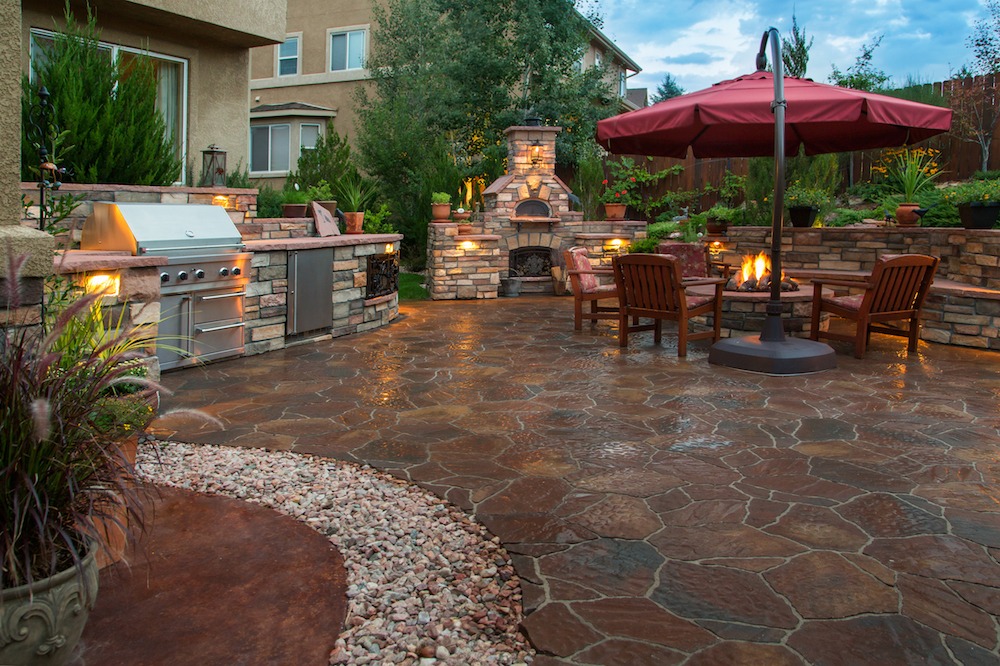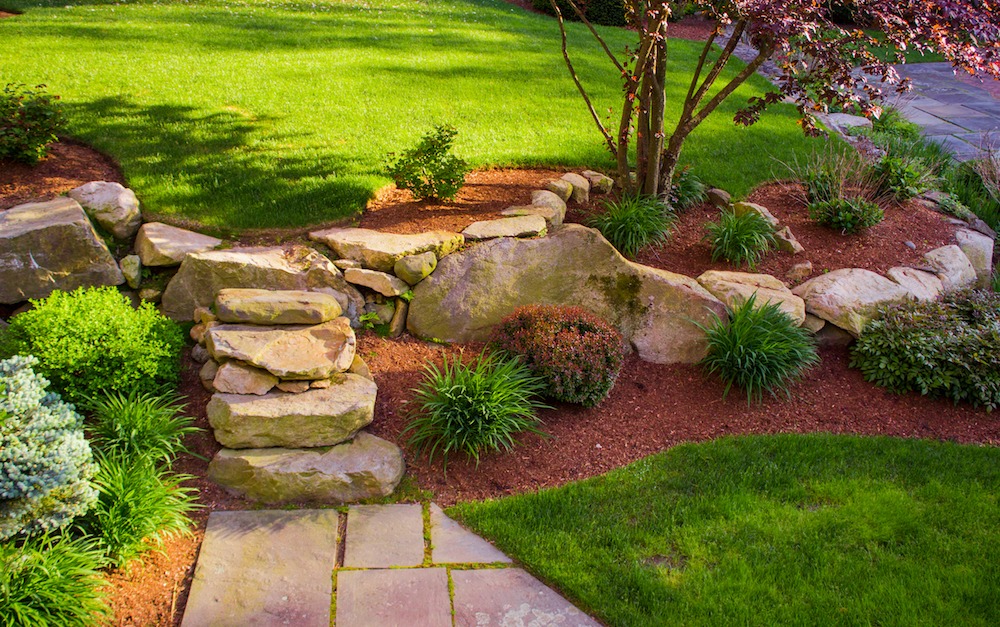The entrepreneur in America is older than the Declaration of Independence. Consider the tanner, trapper, wainwright, cooper and stonemason. Some like John Kellogg of cereal fame had an educational benefit. Benjamin Franklin, Henry Ford and the majority of entrepreneurs, like today, went into business with an idea, some common sense and skills and rugged determination. Or foolish optimism. Or some combination of being wildly independent and skilled in stone masonry. Being an entrepreneur and running a business is challenging, frustrating, rewarding, discouraging, demanding and stimulating all at once. There are moments of exhilaration and days of despair.
And there comes a time in the life of many a business, including stone masonry, when seeking additional revenue streams takes center stage for a variety of sensible reasons. If the masonry angle of the business is sound, and there’s money in the bank, thoughts turn to not only upgrading equipment, buying property and adding an employee or two, but also expanding services and growing the company. On the flip side, if business is not as strong as hoped for, then one turns to offering new services to increase the bottom line in innovative ways. Occasionally, two small business people meet, conversation flows, and each one realizes they could do more, make more and offer more by partnering their talents, products and services.
One of the most natural (pun intended) expansions for masons whose work includes a significant amount of outdoor hardscaping projects is to offer landscaping services alongside exterior improvement jobs. Pairing hardscaping with landscaping offers customers a one-stop kind of shop with the convenience of dealing with one contractor for all their outside property enhancements. But, while the initial idea of adding landscaping services may be appealing, there are many factors to consider if it’s a good match for the long-term.
Landscaping Overview
“Statistics from the July 2016 IBISWorld market report show that the landscape services industry has annual revenues of $78 billion, annual growth of 3.9%, employs 969,257 people and represents 474,237 businesses.” [www.landscapeprofessionals.org] According to Lawn & Landscape 2017 State of the Industry Report, for 2016, 86% of respondents turned a profit with these being the best performing service segments:
30% ~ Landscape maintenance like mowing and trimming
25% ~ Design/build services
15% ~ Lawn services such as chemical application
9% ~ Snow and ice management
5% ~ Trees and ornament installation and care
4% ~ Landscape lighting
3% ~ Waters features
8% ~ Other
[lawnandlandscape.com]
The future of landscape services looks bright as the country continues to slide toward a service economy and the Baby Boomers continue aging. This huge demographic is reluctantly tiptoeing into their 70s, and it still remains the wealthiest generation in U.S. history. Their deliberate independence means more are staying in their own homes and willing and able to pay for services that include exterior property maintenance, improvement and management. The millennials are making good money and value services so they can embrace social events, recreation, travel and personal career advancement. They are further characterized by being team players, questioning the status quo [like Baby Boomers?!] and being financially savvy. Many are first-time home buyers.
The landscape design and maintenance industry is closely linked to the housing market, and as house construction continues to rise, landscaping services will follow. Residential services are abundant, but think outside the subdivision as well to places which all must make an excellent curb appeal first impression, which can make or break a new client or customer and build confidence in the brand.
- hospitals, medical centers, doctors, veterinarians
- county schools and college campuses
- commercial office complexes
- strip malls and shopping centers
- funeral homes
- government buildings like libraries and town halls
- freestanding restaurants and shops
- hotels and resorts
- and more
Landscaping Reality
In the residential market space, there are myriad reasons that homeowners, investors and property managers contract with a landscape design or maintenance firm. They may have:
- no time to spend on the yard
- little desire to work in the yard
- minimal vision to design a landscape
- no inclination to buy, maintain and store the equipment
- new home with no landscaping
- old home that needs upgrade for outdoor living or to sell property
- multiple homes
- demanding travel schedule
A first step in contemplating adding landscape services to your hardscape and masonry business is to evaluate which services you feel most competent to offer. Lawn mowing, trimming, edging and general maintenance are the most basic, while landscape design is a much more comprehensive facet. The design services, which may be much more lucrative, require knowledge, expertise and a broad grasp of soil conditions, plant characteristics, climate factors and environmental issues. Additionally, it’s a very creative endeavor balancing color, texture, size and purpose, like deciduous trees on the south side for shade in summer or cedar for a north side barrier or holly shrubs to mark a boundary between neighbors.
James Ulmer, founder and owner of Back to Nature Landscaping & Construction (having added the construction after a few years in just landscaping), in Blacksburg, Va., says a big part of his job is educating the customers. “They often think our plan looks sparse around the house and outdoor living spaces, and it does for the first few years. We plan an investment for a property, and it’s a long-term growth strategy, literally. We anticipate what it will look like five and 10 years later. If homeowners want the complete look at the beginning, we’ll put in more plants, advising them to remove things once it gets crowded,” he explains. There is a tendency to forget that many bushes and trees grow as much width as height, which explains why DIY-ers often plant way to close to a house, promoting bug and mildew issues when once-little, now-big plants nestle up to siding.
Though Ulmer’s business has expanded from two full-time employees to around 20 in just three years, he stops short of masonry work. “Our design team does patios, landscaping and outdoor kitchens up to the mortar. If anything requires mortar, we subcontract it to a mason. There are advantages, however, to doing both. If you do mortar already, then you have a client base which you can tap for landscape design or maintenance services.” One of his other challenges is assuring that the homeowner will water the plants. Back to Nature guarantees its plants for one year from planting with watering instructions carefully spelled out in the contract. And they do get called for a plant that died, believing it had to be a lack of water, but Ulmer focuses intensively on customer satisfaction. “It’s much less expensive to keep a client than find a new one,” he reveals. To resolve this water issue, his company will offer irrigation installation packages next spring, or customers can sign up for watering services.
So, along with your decision to expand and what landscape services to offer comes the realization that you may be spending lots more of your time interacting with homeowners or property managers. Most of it may be wonderful, some of it cantankerous. The customer is not always right, but having an easy-going personality and problem-solving attitude is imperative.
Amy Volkmann, manager of Nagel’s Sod and Landscaping in Medford, Minn., works with a lot of masons in her area. “There are several companies in the region which build retaining walls, then we come in with the plant material. We also do natural stone patios, but not masonry work. In fact, the big thing now is outdoor pizza ovens, and we can’t find anyone to build them.” Volkmann grew up working in the business started by her mom, Mary Helen Nagel, and her late father, Owen Nagel. Like Ulmer, she subcontracts to masons when mortar is involved.
Two of the challenges Nagel’s Sod faces is dirt and pricing. “Plants need good dirt, and on new construction sites, heavy equipment and trucks have driven repeatedly over the ground resulting in major soil compaction,” she explains. “No one wants to pay to loosen up the dirt and add whatever it needs to support plants. Sometimes there’s still construction debris left behind that needs to be removed before we can render the dirt usable and landscaping can begin. I get questioned often on a plant price and remind the client that this represents working the soil, picking up the plants as much as an hour away, delivering them, putting them in the right place, watering and mulching them and then extending a warranty.”
Landscaping Business
So, seeing that landscapers do not handle masonry work may bode well for a stone mason firm looking to expand into some facet of landscape services. Volkmann has a college degree in human resource management, which she admits is not very helpful in her line of work. Ulmer holds a degree in horticulture landscape contracting with a minor in business from Virginia Tech, which contributes to the relatively fast expansion of his business, but there are many ways to fold a landscape division into the masonry company.
- Buy an existing business
- Merge or partner with one
- Purchase a client list of one going out of business (perhaps for health or personal reasons)
- Consider a franchise
- Start small on your own
Among the bonuses for a stone mason to add landscaping are already:
- having a business license
- owning vehicles
- being used to working outside
- understanding land contour and erosion concerns
- having a reputation and business name recognition
- knowing customers and potential customers
- using a bookkeeping system or service
- owning a website domain and/or Facebook presence
- having cell phone(s)
- possessing basic hand tools and tool boxes
- planning for and managing a seasonal business
Many of the serious financial questions of potential success can be answered in crafting a simple business plan. Here is where projected start-up costs are listed for new or used tools and equipment, employee wages, best case and worst case revenue scenarios and regular expenses. One way to measure potential and gather information is simply by talking to peers, friends, neighbors and customers about the value of your potential expansion. Browse through yelp.com, angieslist.com and homeadvisor.com for positive and negative reviews of landscape companies to get a feel for what the public likes and does not like, where others excel and where some fall short.
It is not practical or particularly necessary to go to college when there are so many books, websites, online classes and landscaping certification programs available. The National Association of Landscape Professionals [www.landscapeprofessionals.org] offers an array of classes which teach and test both head knowledge and practical skills. In addition, the organization offers a 10-hour OSHA course and safety certifications. Master Gardener and Master Naturalist programs are offered through many state extension cooperatives or universities. Community colleges and local garden clubs can be a wealth of information and contacts.
Landscape design software packages are affordable in the $19.99 to $99.99 range. According to www.toptenreviews.com, the best landscaping software according to their parameters is Realtime Landscaping Plus at $79.99. Aaron McCarter, the website’s landscape software reviewer writes:
Realtime Landscaping Plus was a pleasure to use.
It was so intuitive that it felt more like a video game.
I was also impressed by its customization tools that were
much better than other programs.
I could create any landscape that I wanted.
Like Back to Nature Landscaping & Construction’s plan to offer irrigation packages next year, an expansion program might include less common value-added landscape services, like:
-
-
-
- irrigation and sprinkler systems
- specialized pest control
- lightscaping
- snow removal
- fencing
- rain barrels, hanging chains, environmental flairs
- water features
- boardwalks
- outdoor pizza ovens
-
-
At Premium Construction – Stone Masonry, Concrete and Landscape, just southwest of the Forth Worth-Dallas cosmopolitan area, they include tree work. “As part of our landscaping services, which include mowing, edging and sodding, we take great care to look after your trees. Our tree pruning professionals will keep your trees in excellent shape, while keeping them out of the way of power lines, roofs, gutters and away from any place they could pose a danger. We will also come out to remove tree branches after a storm to keep you and your family safe.” [www.stonesettingcontractorarlingtontx.com]
Other places like Nagel Sod and Nursery have a retail shop which is sought out not only for its plants, but also for gifts and garden accents, wrought iron, memorial benches and statues. Being located a stone’s throw from Cabela’s flagship store in Owatonna, Minn., is a sweet bonus, but competition is tough. “Years ago, our nursery dealers did not sell to Wal-Mart, Lowe’s or Home Depot. Now that they do, it’s very hard to compete on the retail side of business,” Volkmann relates.
Advertising your new landscape division is akin to promoting any business with social media as the new kid on the block and newspapers, regional or local magazines, television and radio still out there. And there are other ways that may not have as large a price tag over the long haul.
- Home shows
- Yard signs
- Business or rack cards
- Magnetic car/truck sign
- Chamber and association membership
- Volunteer and fundraising for worthy causes
- Logo clothing
- Post cards and thank you notes
- Advertising specialties with your company name
- Email marketing
A rack card is 4 x 9 inches on glossy, heavy card stock, and it’s surprising how much can be packed into a two-sided, all color business card. Put a logo or photo on the front with company information and someone’s name, then list services on the back. It is wise to check with your vehicle’s insurance company before attaching a magnetic sign on a car or truck door, as this may be viewed as a commercial vehicle in a different insurance category. Chambers and trade associations or regional business groups promote members, and logo clothing gets noticed. Thank you notes never ever go out of style, and all kinds of pens, paper clips, flash drives and giveaways are out there that advertise your business. There are many excellent suppliers of all these products, among them:
-
-
-
- vistaprint.com (paper, magnetic, biz cards, easy self-design, etc.)
- 4imprint.com (mugs, pens, everything under the sun, easy self-design)
- constantcontact.com (email marketing)
-
-
If you possess the basic business skills of common sense, being well organized and passionate about your work, coupled with integrity and respect, then you have the opportunity to expand in many directions, landscaping among them. You might even look at becoming the general contractor for homeowners and property managers, as landscape service personnel are on the property more than sub-contractors who come and go by the job. If you are maintaining a property, you quickly become familiar with its terrain, plants, stonework and the owner or manager. You can offer suggestions and advice for enhancing the exterior for residential curb appeal or commercial image. Then you can use sub-contractors as needed, instead of being one. Embrace a long-term vision with short-term goals. Stay flexible as things unfold and maintain a solid-as-a-rock business perspective.
Words: Joanne M. Anderson
Photos: CharlieTurchetta, laughingmango,irina88w, pixdeluxe, oneillbro
Joanne M. Anderson is a Virginia-based freelance writer with more than 1,000 articles and blogs in print. She especially enjoys home improvement projects, including landscaping challenges on her small horse farm. www.jmawriter.com


